Abstract
1. Poly(2-vinylpyridine 1-oxide) counteracts the pathogenic effects normally produced when quartz is injected into or inhaled by animals and the cytotoxic effects when quartz is added to macrophage cultures. The protective action of this polymer has been attributed variously to the formation of an adsorbed layer on the quartz particles, complex formation with monosilicic acid produced by the dissolution of quartz, and strengthening of the membranes or microstructures of the cells.
2. Stereoregular forms of poly(2-vinylpyridine 1-oxide), some alkyl derivatives of poly(2-vinylpyridine 1-oxide), poly(3-vinylpyridine 1-oxide) and poly(4-vinylpyridine 1-oxide), a copolymer of 2-vinylpyridine 1-oxide and 2-n-propenylpyridine 1-oxide, some poly(1-methyl-2-vinylpyridinium) quaternary salts, and poly(1-methoxy-2-vinylpyridinium iodide), which had previously been synthesized and studied with respect to their viscosities and interaction with silicic acid, were tested for their ability to counteract the cytotoxic effects of quartz in macrophage cultures. The tests were effected both by pretreating the quartz with polymers, and by pretreating the cells.
3. Every polymer proved active in one or other of these conditions, but several were active in one test but inactive in the other. Some polymer quaternary salts, which do not contain the N-oxide group, were found to be active. A remarkable difference in activity was found between the two stereoregular forms of poly(2-vinylpyridine 1-oxide). Pretreatment of the quartz with some of the polymers increased its cytotoxicity significantly.
4. Most of the results could be interpreted on the hypothesis that the polymers form an adsorbed layer on the quartz surface, but it is difficult to apply this explanation to two polymers which are inactive when used to pretreat the macrophages but are active when adsorbed on quartz.
Full text
PDF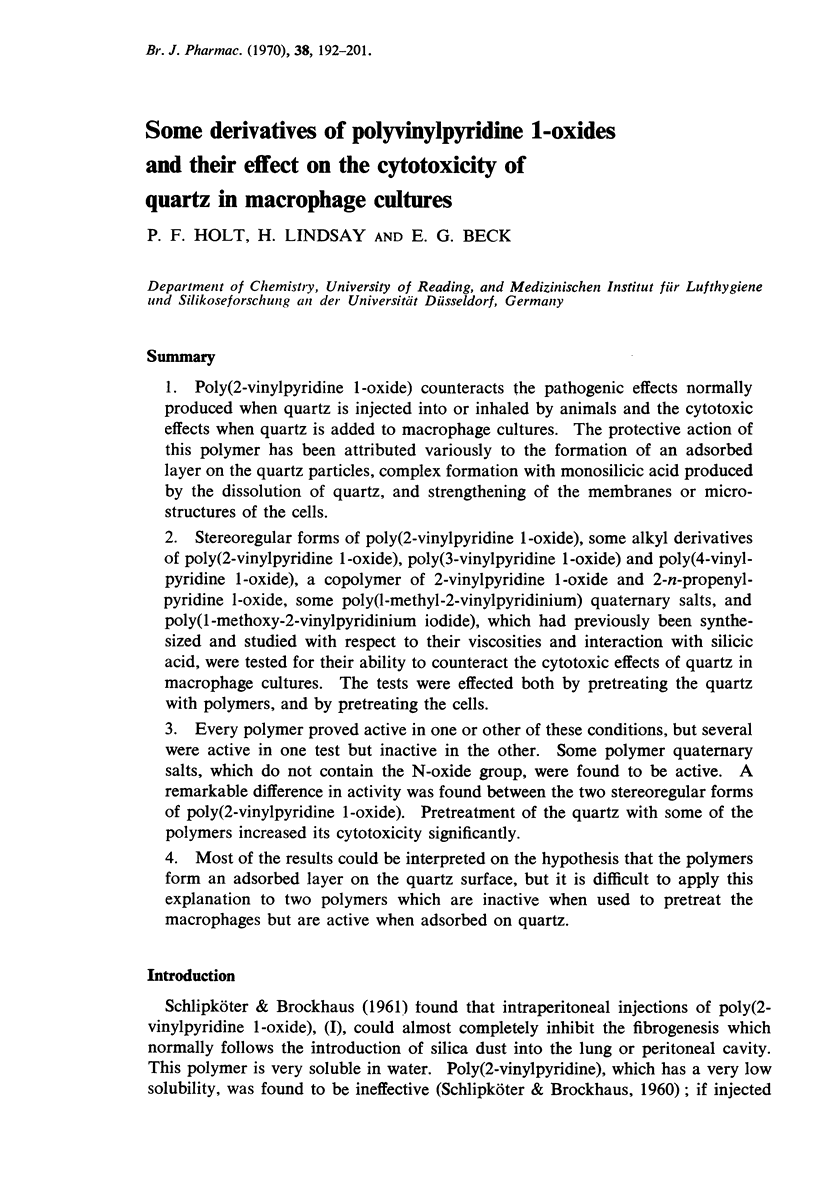
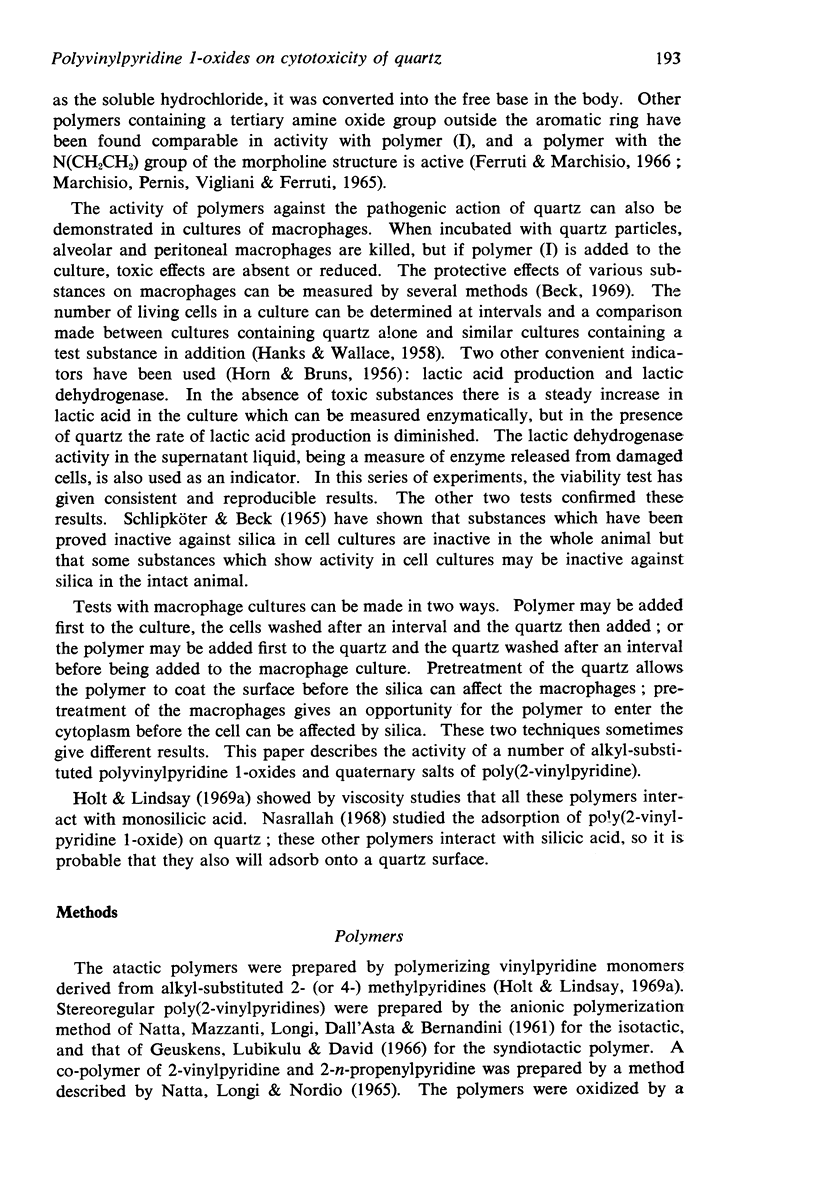
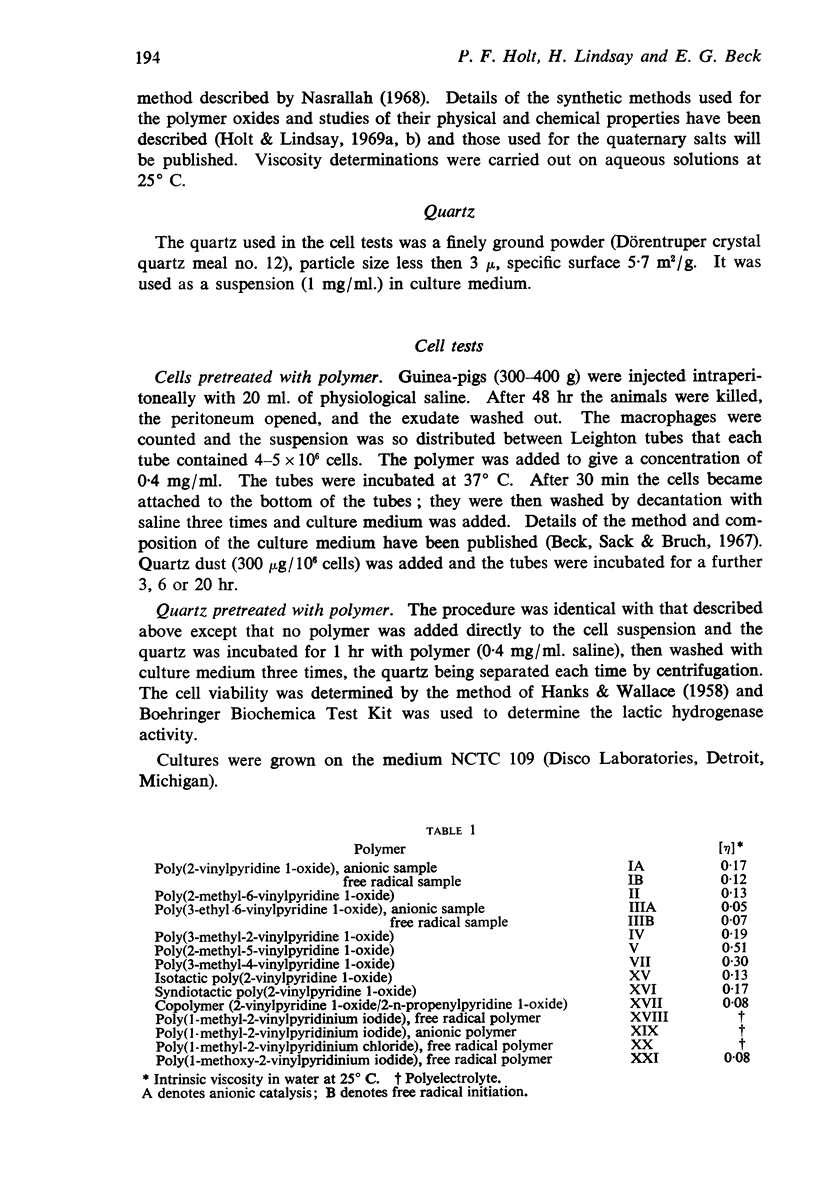
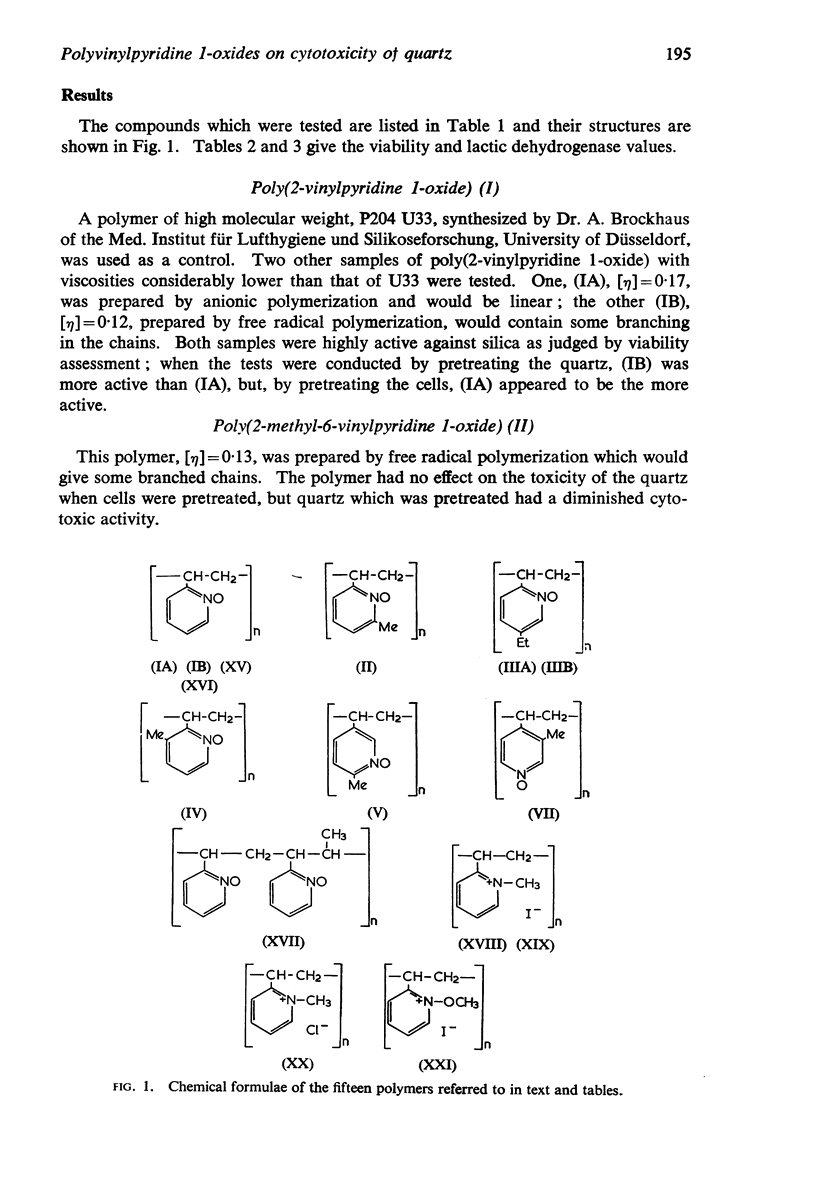

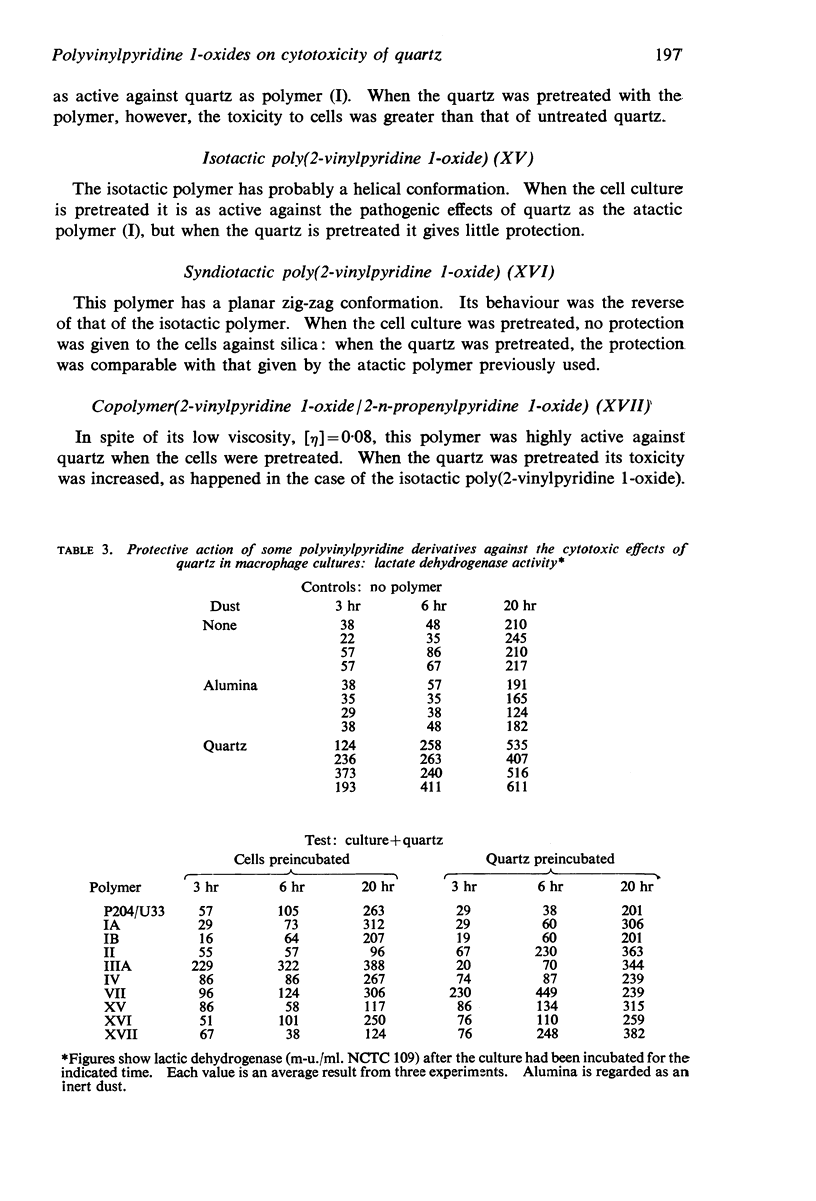
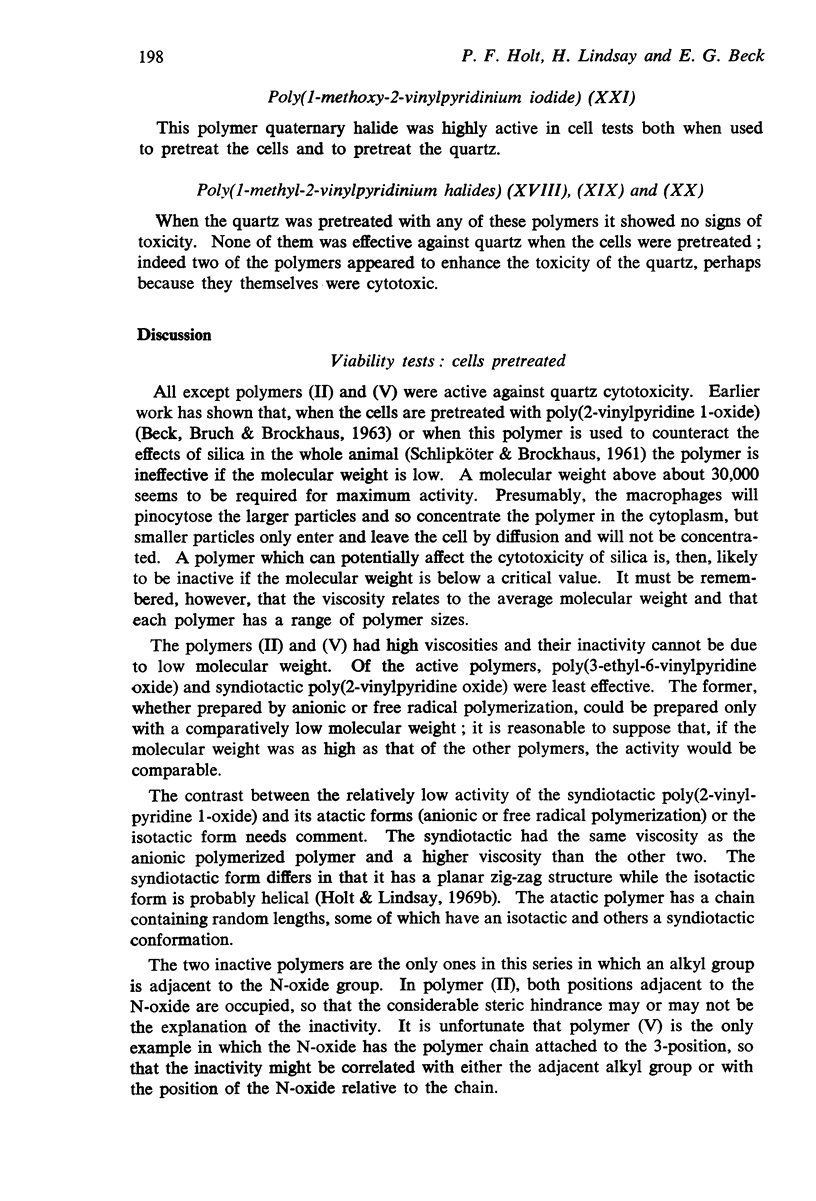
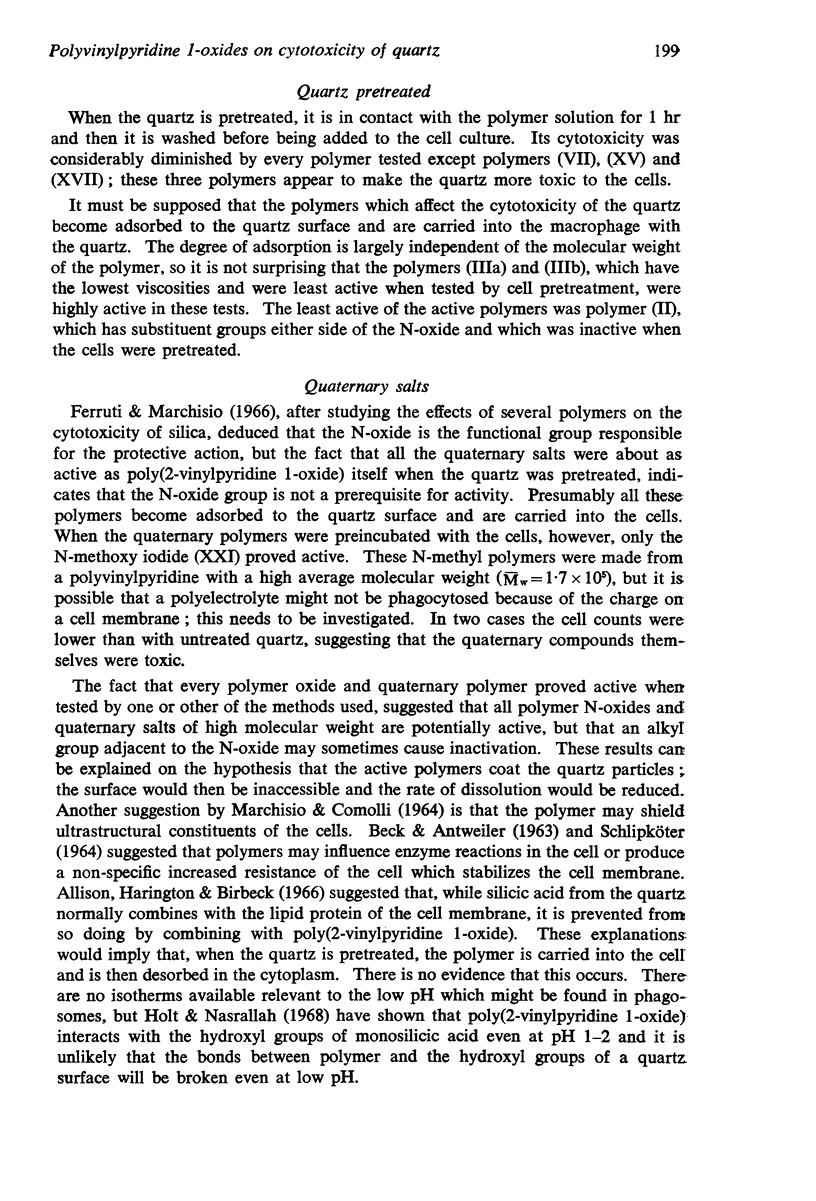
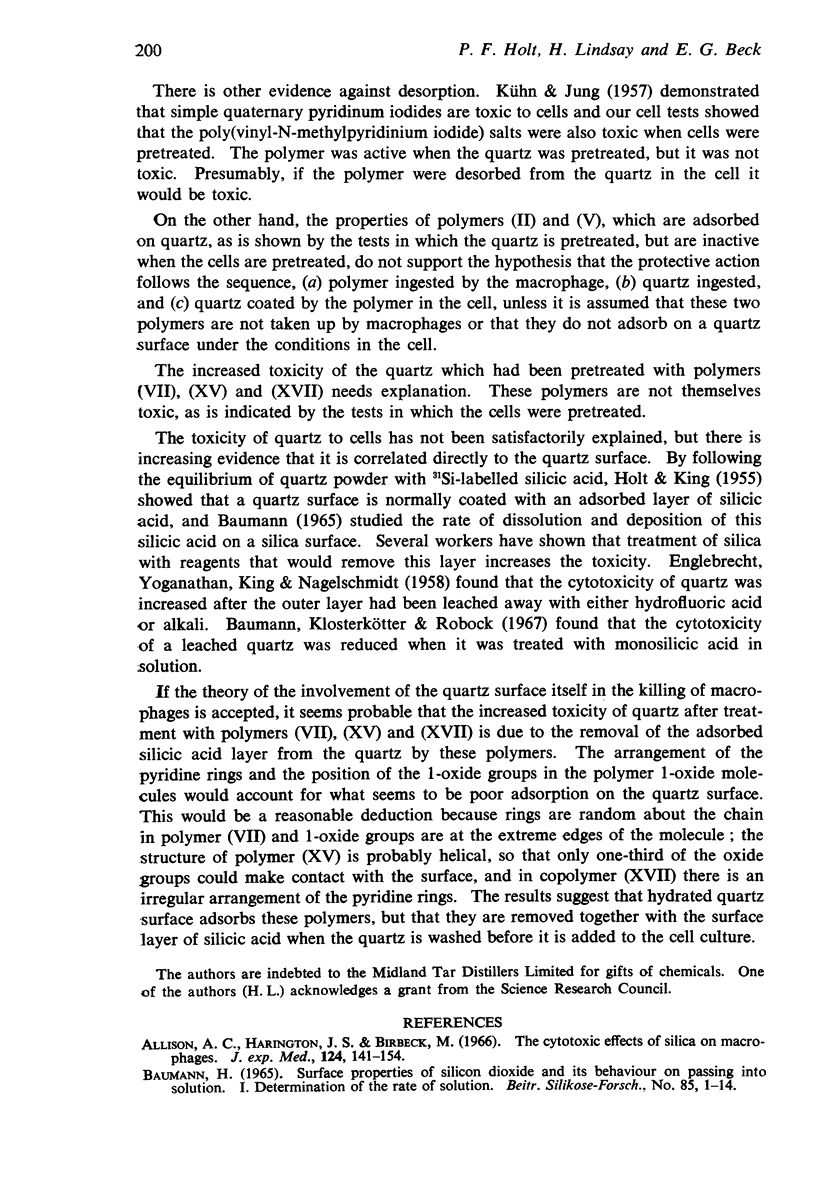
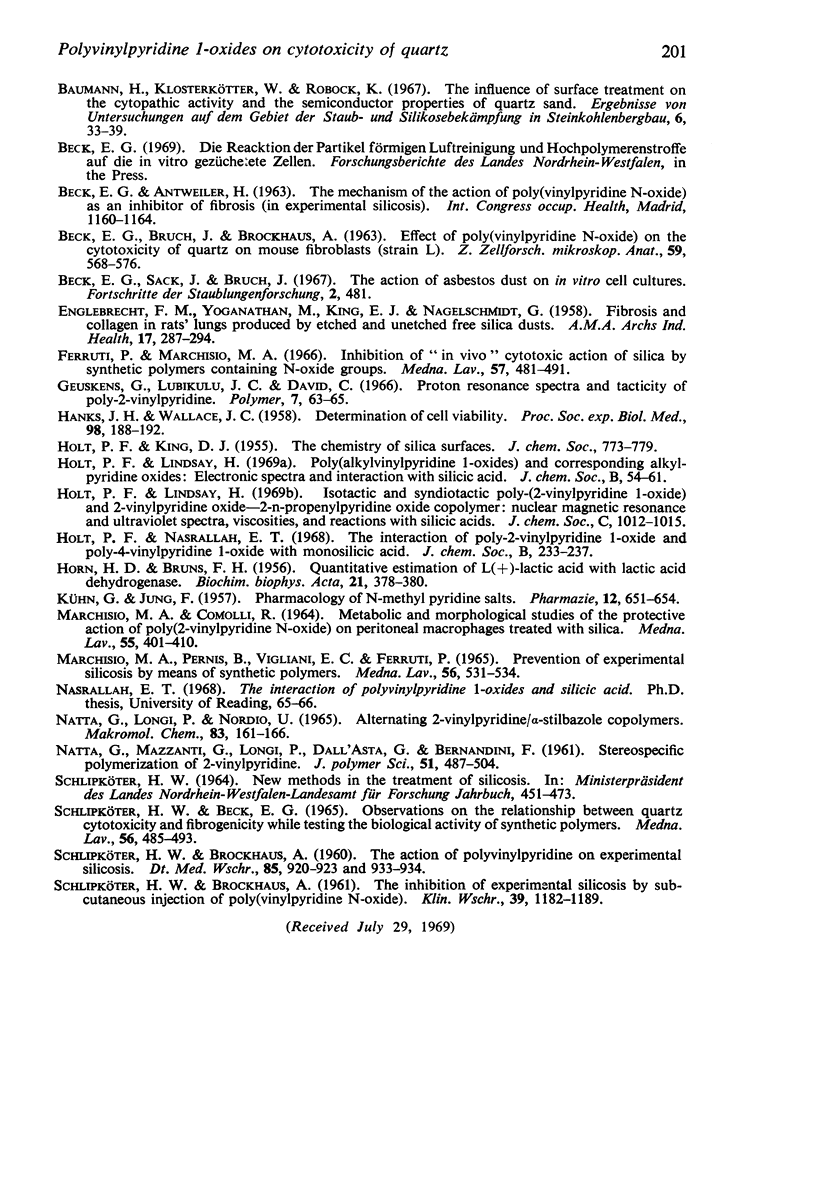
Selected References
These references are in PubMed. This may not be the complete list of references from this article.
- Allison A. C., Harington J. S., Birbeck M. An examination of the cytotoxic effects of silica on macrophages. J Exp Med. 1966 Aug 1;124(2):141–154. doi: 10.1084/jem.124.2.141. [DOI] [PMC free article] [PubMed] [Google Scholar]
- BECK E. G., BRUCH J., BROCKHAUS A. [Alteration of the cytotoxic effect of quartz on mouse fibroblasts (strain L) by polyvinylpyridine-N-oxide]. Z Zellforsch Mikrosk Anat. 1963;59:568–576. [PubMed] [Google Scholar]
- BRUNS F. H., HORN H. D. Quantitative Bestimmung von L(+)-Milchsäure mit Milchsäuredehydrogenase. Biochim Biophys Acta. 1956 Aug;21(2):378–380. doi: 10.1016/0006-3002(56)90023-3. [DOI] [PubMed] [Google Scholar]
- ENGLEBRECHT F. M., YOGANATHAN M., KING E. J., NAGELSCHMIDT G. Fibrosis and collagen in rats' lungs produced by etched and unetched free silica dusts. AMA Arch Ind Health. 1958 Apr;17(4):287–294. [PubMed] [Google Scholar]
- Ferruti P., Marchisio M. A. Blocco dell'azione citolesiva della silice "in vitro" mediante polimeri sintetici contenenti il gruppo N-O. Med Lav. 1966 Aug-Sep;57(8):481–491. [PubMed] [Google Scholar]
- HANKS J. H., WALLACE J. H. Determination of cell viability. Proc Soc Exp Biol Med. 1958 May;98(1):188–192. doi: 10.3181/00379727-98-23985. [DOI] [PubMed] [Google Scholar]
- KUHN G., JUNG F. Zur Pharmakologie der N-Methylpyridiniumsalze. Pharmazie. 1957 Oct;12(10):651–654. [PubMed] [Google Scholar]
- Marchisio M. A., Pernis B., Vigliani E. C., Ferruti P. Prevenzione della silicosi sperimentale con polimeri sintetici. Med Lav. 1965 Aug-Sep;56(8):531–534. [PubMed] [Google Scholar]
- SCHLIPKOETER H. W., BROCKHAUS A. [Inhibition of experimental silicosis by subcutaneous administration of polyvinylpyridine-N-oxide]. Klin Wochenschr. 1961 Nov 15;39:1182–1189. doi: 10.1007/BF01532453. [DOI] [PubMed] [Google Scholar]
- SCHLIPKOETER H. W., BROCKHAUS A. [The effects of polyvinylpyridine on experimental silicosis]. Dtsch Med Wochenschr. 1960 May 20;85:920–923. doi: 10.1055/s-0028-1112521. [DOI] [PubMed] [Google Scholar]
- Schlipköter H. W., Beck E. G. Observations on the relationship between quartz cytotoxicity and fibrogenicity while testing the biological activity of synthetic polymers. Med Lav. 1965 Jun-Jul;56(6):485–493. [PubMed] [Google Scholar]


